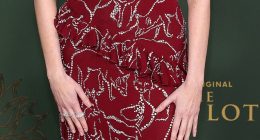The desert whip snake, also known as Demansia Cyanochasma, has been mistaken for another species for decades.

“This discovery was made through a combination of genetic studies and sampling physical specimens,” Nankivell told 9News.com.au.
“It’s quite commonly seen through outback towns.”
The blueish and copper-coloured snake has a unique hunting style which makes it a fierce predator.

“They’re active predators that are out during the day to hunt down prey.”
Thankfully, the venomous species is unlikely to cause a fatal bite in humans.

The world’s deadliest, most terrifying, snakes
Read Related Also: Now tick bites spark a deadly meat allergy – and even the SMELL of sizzling bacon can trigger a reaction including itching and breathing difficulties
“The species is mildly-venomous, but not likely to cause a serious bite, pain and swelling is most likely,” Nankivell said.
The desert whip snake’s unique coloured body was the inspiration behind its scientific name, Demansia cyanochasma, which means blue gap.
The next step for the researchers is to do more sampling and genetic tests, as it’s possible more distinct snake species remain unnamed.
“Whip snakes are the most diverse venomous snake in Australia,” Nankivell said.
“And only slight colour variations tell them apart, but colour fades in museum specimens.
“There are 15 species we know of but it’s possible more species are out there, probably in the tropics.”






